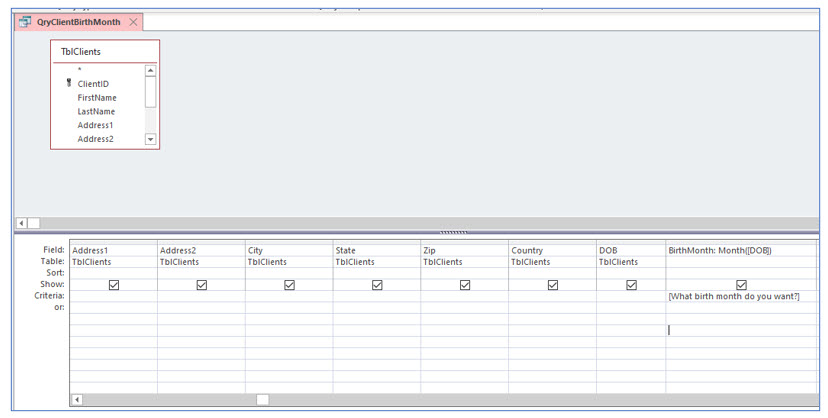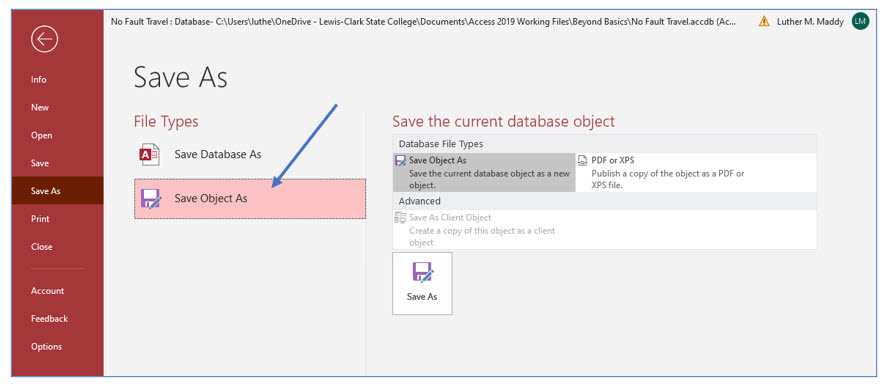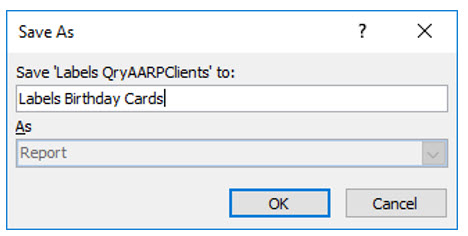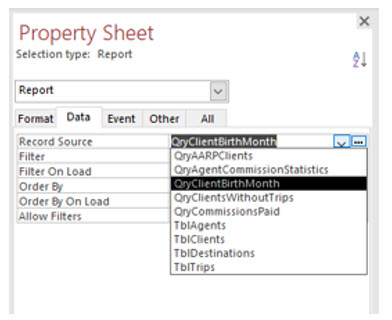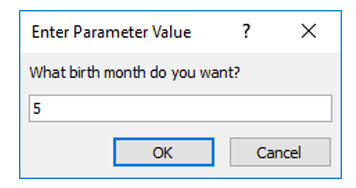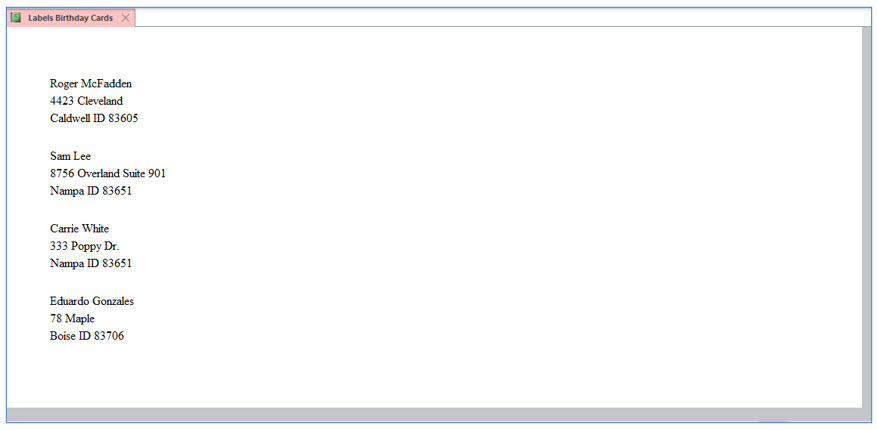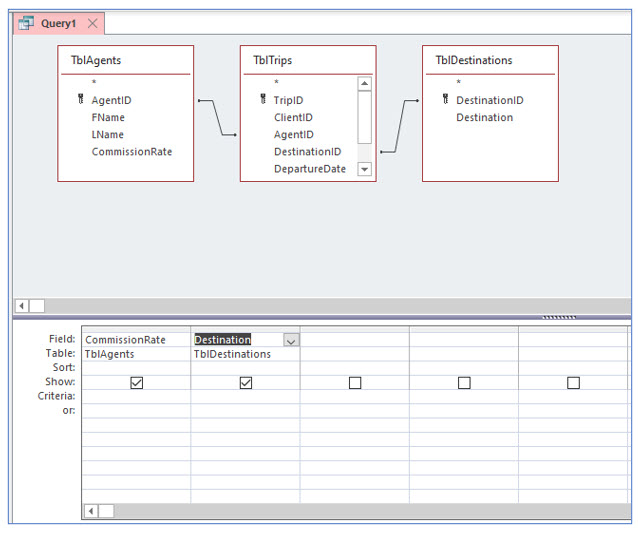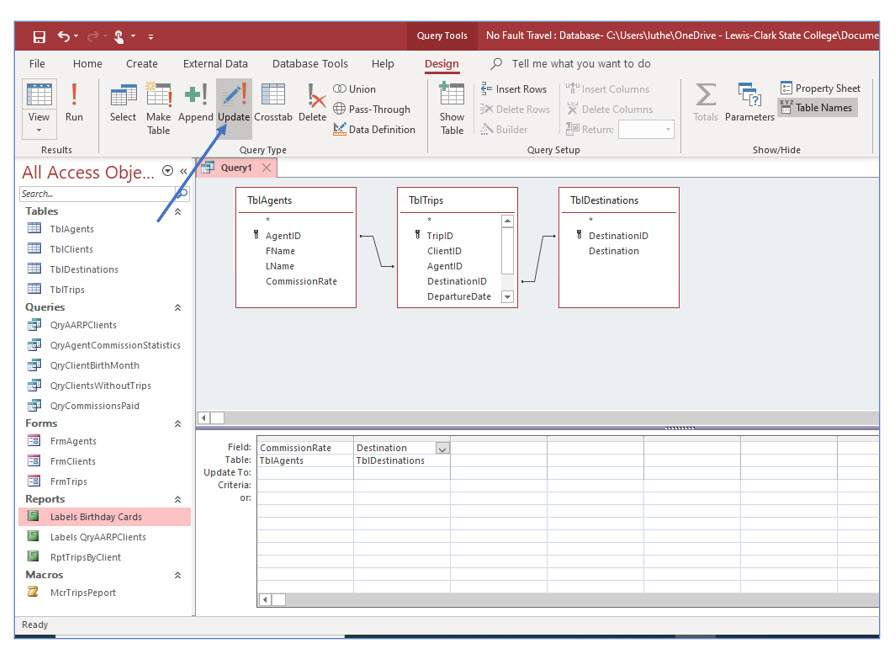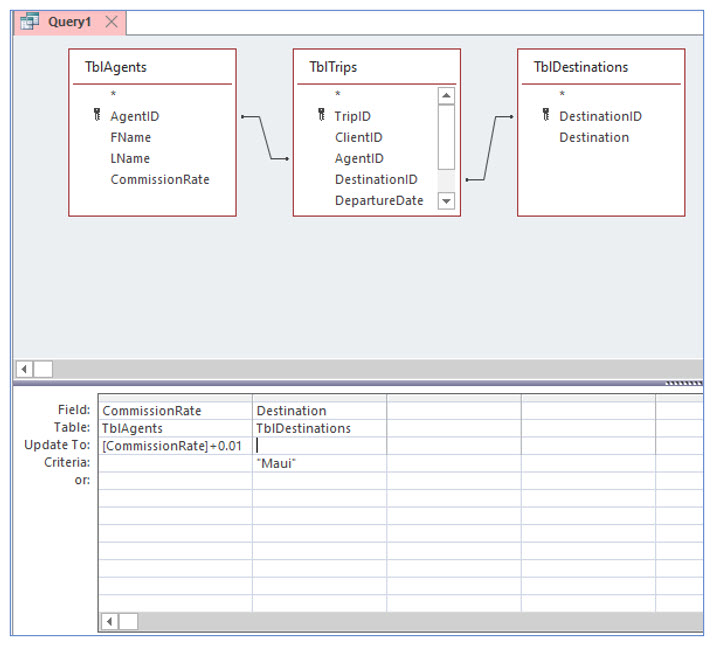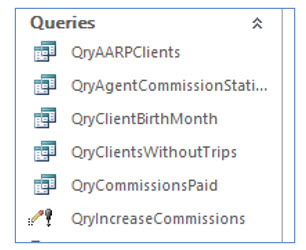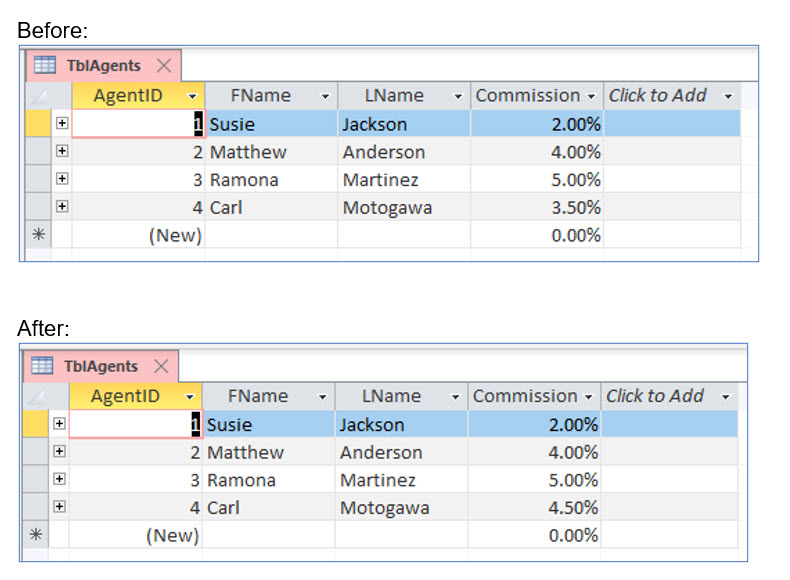Parameter and Action Queries
Much of the power in an Access database comes when you intitally set it up. One of the essential elements of proper database design is understanding how to use Access' Queries. This lesson will step you through using Parameter and Action Queries.
Note: These lessons are excerpted from Luther Maddy’s Access Workbooks (C) 2024 which are available in printed or eBook format from Amazon: Access: The Basics and Access: Beyond The Basics
Parameter and Action Queries
Using Parameter Queries
Parameter queries allow you to specify criteria based on parameters entered by the user when you run a query, or report based on that query. In a previous lesson, you created a query that computed each client’s birth month based on the client’s birthdate.
In this lesson, you will create a parameter query, which asks you to enter the numeric month for clients with birthdays falling in that month. Imagine creating mailing labels based on this query. As you open the mailing labels report, Access would instantly ask which birth month you wanted to print labels for. If you wanted labels for all clients with a May birthday, you would enter a 5 when prompted.
1. If it is not already open, open the No Fault Travel database. View the query named QryClientBirthMonth in Design View.
2. In the criteria of the BirthMonth field type [What birth month do you want?].
This is the parameter. When you run the query, an Enter Parameter Value dialog box will appear and ask what birth month you want.
3. Save and close this query.
You will now use this query to create mailing labels by saving the existing label report under another file name and changing the query that the “new” label report is based on.
4. In the navigation pane under Reports, double click on LabelsQryAARPClients and view in Design View.
5. Click the File menu and choose the Save As option.
6. Under File Types, choose Save Object As. Under Save the current database object, choose Save Object As and then click the Save As button.
Choosing Save Object As informs Access you are intending only to save the active object (i.e., the query) and not the entire database.
7. In the Save As dialog box, name the new file Labels Birthday Cards and click OK.
8. View Labels Birthday Cards in Design View. Click the Report selector, then choose Property Sheet in the Tools group on the Design tab.
Be sure you are viewing the property sheet for entire report and not just a section or a field. If Report is not listed after Selection type, you can use the dropdown list to select it.
9. On the Property Sheet pane, select the Data tab. Click the dropdown list arrow in the Record Source property.
10. Change the Record Source to QryClientBirthMonth and then close the Properties dialog box.
11. Save and close the labels report.
Now, you will open the labels tied to the birth month query.
12. In the navigation pane under Reports, double click the Labels Birthday Cards report.
Because the label report is based on the parameter query, Access now asks you to specify which birth month you want.
13. In the Enter Parameter Value dialog box, type 5 and then click OK.
You should now be viewing labels for clients with a May birthday.
14. Close the label report.
15. Run the label report again, and enter 12 as the birth month.
Notice there are different labels.
16. Close the resulting label report.
Working with action queries
All the queries you have used in this course so far are variations of a Select query. Select queries allow you to view data and even compute values based on query fields. Select queries do not change the data in the tables. On the other hand, action queries can add, change, or delete the data in tables.
Access provides several types of action queries. The update query will change or update data, based on the criteria you enter. The delete query will delete records that meet the criteria you specify. Make table queries copy specified records from one table to a new table.
Creating an update query
In this portion of the lesson, you will create an update query that increases by 1% the commission rate of all agents who have scheduled trips to Maui.
1. Create a new query in Design View based on TblAgents, TblTrips and TblDestinations.
2. Add the CommissionRate field from TblAgents and Destination from TblDestinations.
You added the destinations table so that you could refer to the destination by name instead of number as you did when you created a macro.
3. From the Query Type group in the Design tab, choose Update query.
This changes the query type to update. You should notice a new row in query design labeled Update To.
4. In the Criteria row of the Destination field, type Maui.
5. In the Update To row in the CommissionRate field, type [CommissionRate]+.01.
This is the formula to increase the commission rates of those agents who have booked trips to Maui by 1%.
Note: To run an action query from Design View, you must use the "run" tool (seen below) in the Results group on the Design ribbon. The View tool in the Results group works great for running select queries but not action queries.
6. Save this query as QryIncreaseCommissions and close it.
Notice that the action query you just saved has a different icon in the navigation pane object list than the select queries on the list. Be extremely cautious when you run action queries. You might consider not saving them at all, unless there is something you need to do regularly to the data..
Every time you run the update query you just created, the commission rates of agents with trips to Maui will be increased. Running the query multiple times would result in extremely high commissions for the lucky agents.
You will run the query once in this course – just to see how an action query works. Since this is fictitious data, you may run it multiple times just for fun.
7. In the list of queries, open QryIncreaseCommissions.
You can “Open” this query by double clicking on it. Because it is an action query, opening it causes it to run.
8. Answer Yes when asked if you want to continue.
This is a warning message telling you to use caution when running Action queries.
Access now tells you how many records this query will update. Your number may be different if you have modified or entered additional fictitious data.
9. Answer Yes when asked if you want to update the rows.
After clicking yes here, you will not see any confirmation that the query has run. To verify that the query has modified the commission rates in the agents table, you can examine the records in that table.
10. Open TblAgents in Datasheet View.
If you compare the before and after agents table, you will see that Carl has received an increase in his commission rate because he booked a trip to Maui.
11. Close the table.
You have successfully completed Access: Beyond the Basics. Hopefully you have a better idea of some of the power in Access and see that is it not really all that difficult to use.
